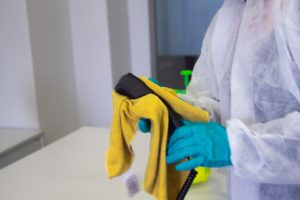Preface
Novapura had an independent company conduct a survey on the topic of “Disinfection in hospitals” in Swiss healthcare facilities in May 2022. One of the main topics was the method of surface disinfection. The following methods were available for selection:
- manual surface disinfection with microfibre or cotton cloth
- room disinfection by fogging
- room disinfection by spraying
- room disinfection by UV
A further question concerned the event of contamination. We distinguished between two cases:
- standard disinfection, which is carried out regularly, and
- the extraordinary decontamination of a room, triggered by a multi-resistant bacterium or a virus.
Results
Manual surface disinfection is indicated as a method in 100% of the responses when it comes to regular standard disinfection. This includes rooms such as quarantine rooms, operating theatres, toilets for staff and patients, or patient rooms. The treated room can be used again immediately. The disinfection process is not documented.
Manual surface disinfection is indicated as a method in 85% of the responses when it comes to decontaminating rooms. In a few cases, those responsible use a UV device, or they carry out room disinfection by fogging. The room cannot be used for up to one day. The disinfection process is partially documented.
Findings
Manual surface disinfection is still the measure of all things, despite obvious deficiencies such as
- personnel-intensive process, as a result
- low process reliability.
- lack of documentation, leading to
- no possibilities to improve quality.
Neither automation nor digitalisation have found their way into this process.

